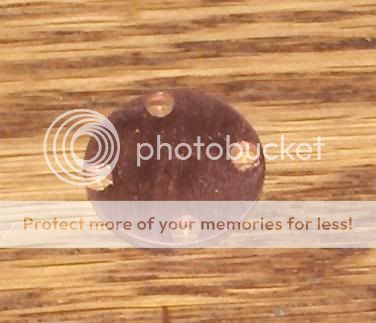VanIsleDSM
Enlightened
I'm very excited for the new MC-E coming out. I've already designed and built a driver for the MC-E, and I'm almost finishing turning a host for it on the lathe.
Since the 4 die construction will be much more thermally dense than 4 separate LED packages, I want to be able to eek out every little bit of heat I can, not only for efficiency and longevity, but to hopefully make certain that I can safely run these up to 1000mA per die.
So what I've done is this:


It may not look too special, but there is actually no dielectric layer involved for the thermal path. I machined down a piece of copper to an 18mm diameter, then I took a little over 1/64" of material off the face, but leaving a round nub in the middle, a little bigger than the thermal pad for the MC-E. I etched out the mounting design with the pads for the MC-E onto some 1/64" FR-4 board, drilled a hole in the middle of the FR-4 for the nub on the copper, laminated the FR-4 onto the copper, and then lapped the whole thing flat on both sides to 2000 grit on a piece of glass.
I sanded a little much, and slightly took off a couple of the wire mounting pads, but not so bad for a first try.. and it'll still work just fine.
This time I just made a thin mounting board, however for many projects I'll just be using the same process but I'll make the copper piece the whole heatsink.
The thin boards could be reflow soldered, while the larger heatsinks would hold too much heat to be able to control the temp properly during reflow I think. But no matter, I don't plan to solder, just A.S. epoxy the heat pad under high pressure, and hand solder the pins.
I may try reflowing some in the future, but there's almost no difference between a very thin layer of A.S. epoxy on 2000grit glass lapped copper, and between actual solder.
What do you guys think? what else could I do to improve the design?
p.s. Sorry for junk pics.. I'll get some with my other camera tomorrow.
Since the 4 die construction will be much more thermally dense than 4 separate LED packages, I want to be able to eek out every little bit of heat I can, not only for efficiency and longevity, but to hopefully make certain that I can safely run these up to 1000mA per die.
So what I've done is this:


It may not look too special, but there is actually no dielectric layer involved for the thermal path. I machined down a piece of copper to an 18mm diameter, then I took a little over 1/64" of material off the face, but leaving a round nub in the middle, a little bigger than the thermal pad for the MC-E. I etched out the mounting design with the pads for the MC-E onto some 1/64" FR-4 board, drilled a hole in the middle of the FR-4 for the nub on the copper, laminated the FR-4 onto the copper, and then lapped the whole thing flat on both sides to 2000 grit on a piece of glass.
I sanded a little much, and slightly took off a couple of the wire mounting pads, but not so bad for a first try.. and it'll still work just fine.
This time I just made a thin mounting board, however for many projects I'll just be using the same process but I'll make the copper piece the whole heatsink.
The thin boards could be reflow soldered, while the larger heatsinks would hold too much heat to be able to control the temp properly during reflow I think. But no matter, I don't plan to solder, just A.S. epoxy the heat pad under high pressure, and hand solder the pins.
I may try reflowing some in the future, but there's almost no difference between a very thin layer of A.S. epoxy on 2000grit glass lapped copper, and between actual solder.
What do you guys think? what else could I do to improve the design?
p.s. Sorry for junk pics.. I'll get some with my other camera tomorrow.
Last edited:




